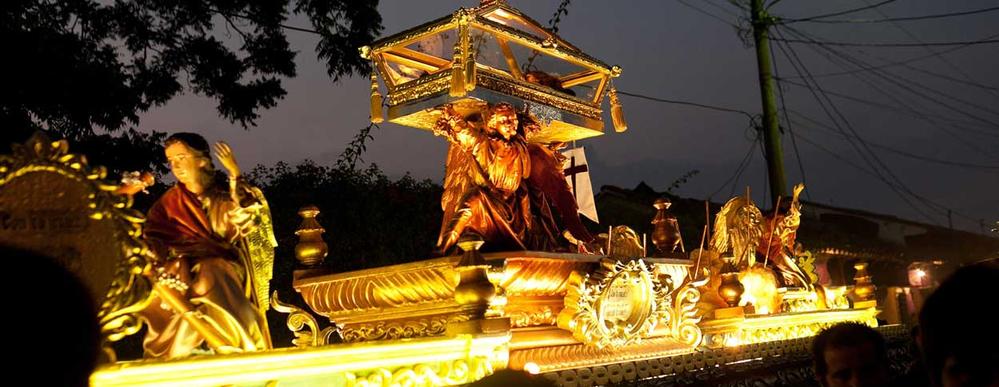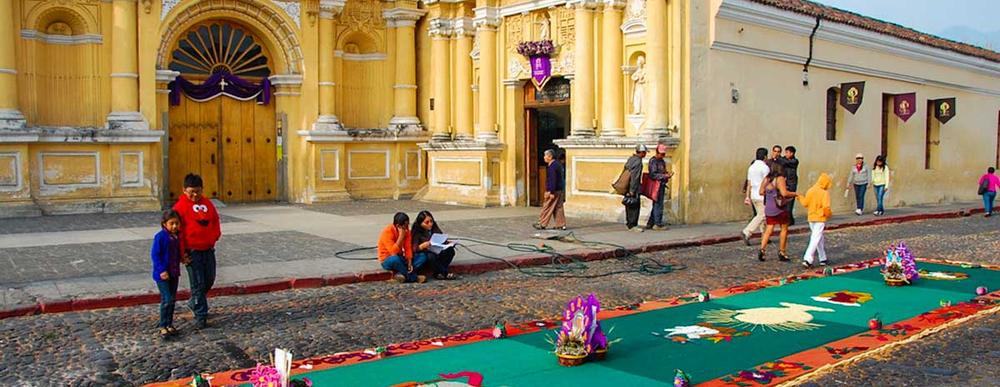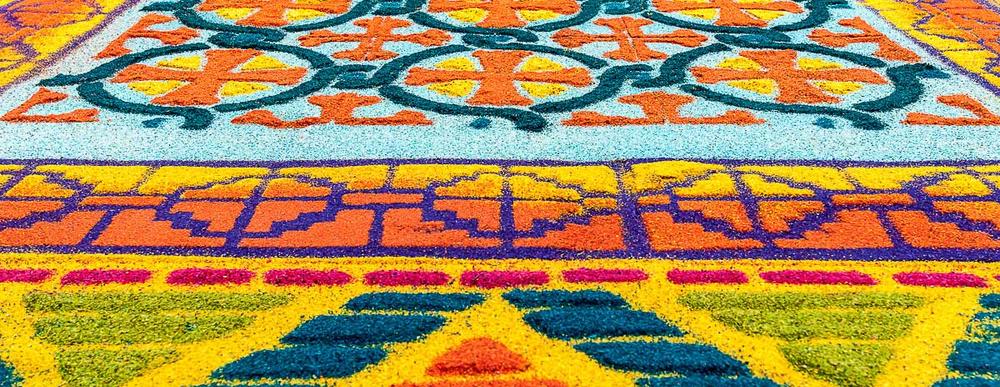Posted on Mar 11, 2018 |
Throughout Guatemala, Easter Week or Semana Santa as it is called in Spanish, is celebrated as one of the most significant and festive season on every religious and social calendar.
Antigua Guatemala colonial city embraces thousands of travelers wanting to experience this world-famous Catholic celebration commemorating the Passion, Crucifixion, and Resurrection of Jesus Christ, this celebration is deeply rooted in local traditions that make the celebration of Easter a colorful and massive one.
Antigua Guatemala it leads the spanish-speaking cities in Latin America with spectacular procesiones that are among the world’s most photogenic and iconic. Antigua’s parades are a voluptuous, baroque, often dramatic affair – and not a brief one. “A parade can easily come out at noon and ends at 2am,” says Mary Bolaños, a local photographer. “one should live at least once” she adds.
Each ‘Procesion’ is made up of big floats, or ‘andas’ as it is know in Spanish, carrying big statues of Christ with a cross, these are carried by hundreds of purple-robed men, called ‘Cucuruchus’. One the other hand, women dressed in black clothing carry the procession with the Virgin Mary. The processions move slowly through Antigua Guatemala cobblestone streets, the feet of the bearers cushioned in the colorful-sawdust carpets, which are slowly destroyed as the procession passes over.
Funeral marching bands follow the floats on Antigua streets, a music you can hear blocks away, announcing themselves with sounds of slowly beating drums and deep-throated tubas. Thick incense creates a haunting, ghost-like fog all around. Crowds of local and tourist people hush as the solemn procession passes by.
No wonder why Antigua Guatemala is the most visited town in Guatemala. The juxtaposition of city’s colonial architecture with its volcano-strewn surroundings, the cobbled small-town feel amid the rolling hills.
Some of the most remarkable aspects of Semana Santa (Easter Week) are the luxurious alfombras (Arabic word for "carpet") adorning the cobbled streets between processions. Families, tourist and friends begin preparations weeks and months ahead of the festival to create these elaborate offerings, and effort that requires lots of time, money and hard work.
Latest Posts
-
Easter Week 2025 Schedule Processions Antigua Guatemala
- Mar 02, 2025 -
Ten Beautiful Words in the Spanish Language
- Jul 13, 2024 -
Easter Week 2024 in Antigua Guatemala
- Feb 04, 2024


